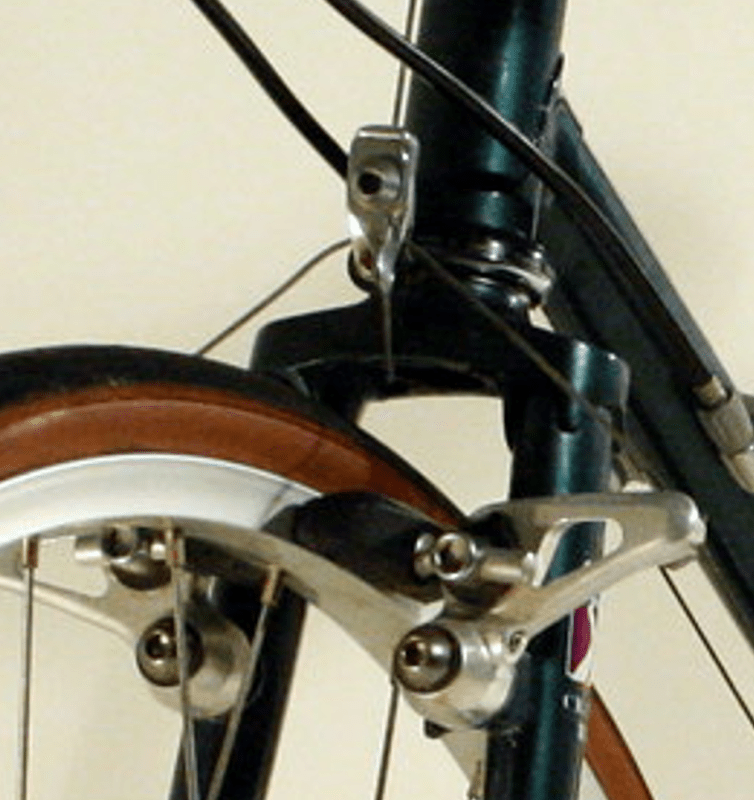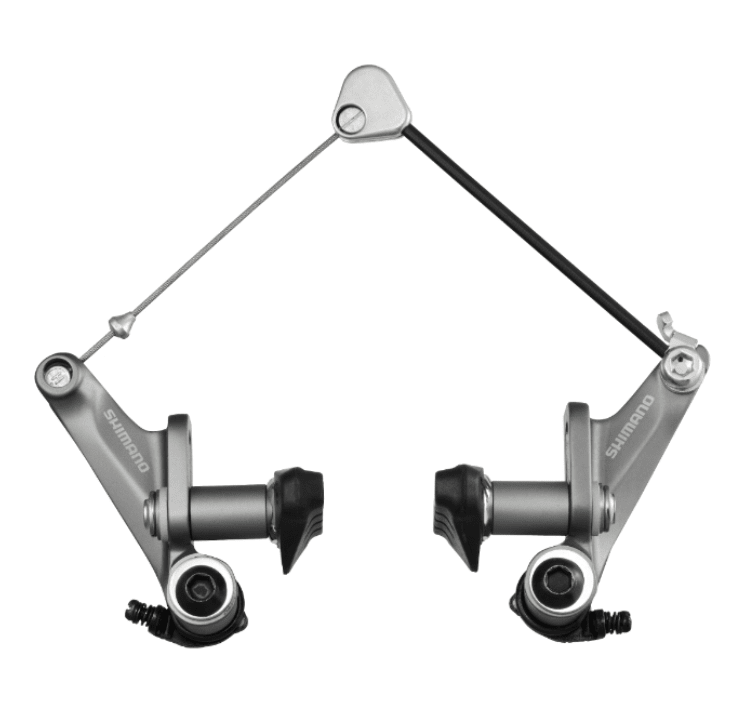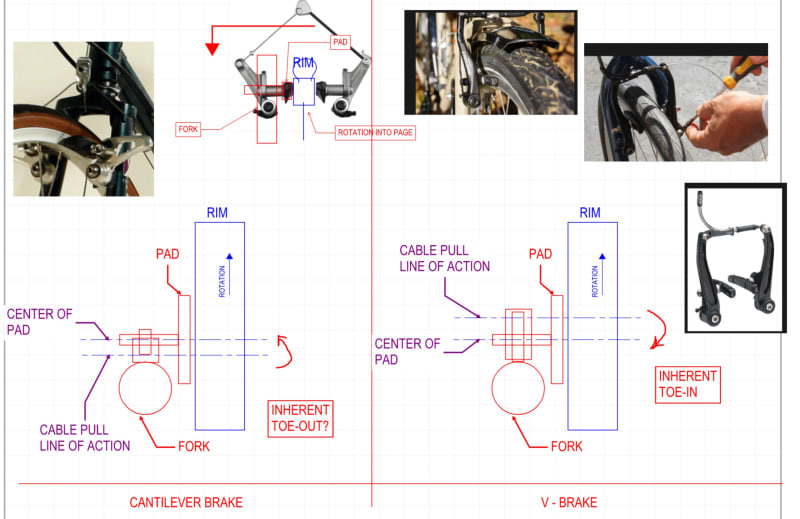KootK
Structural
- Oct 16, 2001
- 18,519
At the beginning of covid I acquired a version of the bicycle shown below. It's a 1992 Miyata 1000LT. It was the best, production touring bike that one could buy in 1992 for any amount of money. It is legendary for being a sweet, smooth, "steel is real" ride and the legend could not be truer. When I ride the bike, I feel so little discomfort in my body that it's almost as though someone chopped off my head and mounted it to the handle bars. I feel nothing but joy and exertion.
Performance wise, the only non-awesome thing about the bike is the cantilever brakes. As cantilever brakes are prone to doing, hard front braking will induce a pulsating front end shudder that is very disconcerting. Before attempting to fix the problem, I would like to accurately diagnose it. Everywhere this question is asked out in the online Bike-o-Verse, you get the same "bow and arrow" explanation described in detail here: Link. Looking at that explanation as a structural engineer, I find it to be utterly implausible. Some suggested remedies can also be found at that link but I deem them to be questionable because, in my opinion, they are based on a flawed theory of causation.
So my first question here is this: what do you think of the "bow and arrow" explanation? Do you buy it? Do you share my skepticism? I have reasons for my doubt, of course, but I'm going to withhold them for a spell here in the hope of not contaminating the thought pool. I've reproduced part of the "bow and arrow" explanation below for reference.
I've got my own theory about the cause of the fork shudder which we'll get into in more detail on later. The short version is that I think that it's a function of torsional fork twist rather than the front to back fork flexing that the "bow and arrow" theory suggests.

Performance wise, the only non-awesome thing about the bike is the cantilever brakes. As cantilever brakes are prone to doing, hard front braking will induce a pulsating front end shudder that is very disconcerting. Before attempting to fix the problem, I would like to accurately diagnose it. Everywhere this question is asked out in the online Bike-o-Verse, you get the same "bow and arrow" explanation described in detail here: Link. Looking at that explanation as a structural engineer, I find it to be utterly implausible. Some suggested remedies can also be found at that link but I deem them to be questionable because, in my opinion, they are based on a flawed theory of causation.
So my first question here is this: what do you think of the "bow and arrow" explanation? Do you buy it? Do you share my skepticism? I have reasons for my doubt, of course, but I'm going to withhold them for a spell here in the hope of not contaminating the thought pool. I've reproduced part of the "bow and arrow" explanation below for reference.
I've got my own theory about the cause of the fork shudder which we'll get into in more detail on later. The short version is that I think that it's a function of torsional fork twist rather than the front to back fork flexing that the "bow and arrow" theory suggests.

Leonard Zinn said:Why does shudder occur?
Brake shudder is widespread because it’s built into the design of almost all ’cross bikes; it’s inherent to the design of a center-pull cantilever brake. To understand the reason why it happens and why reduced pad size, lots of toe-in, and a tight headset help take a look at the chart titled “Brake Shudder in cantilever brakes.”
As the brake is applied, the ground applies a force directed backward on the tire as shown, causing the fork to flex backward. Problem is, the brake cable is fixed at one end at the brake caliper and at the other end at the cable stop above the headset (as you can see in my case, at a cable hanger attached to a bolt on the stem face plate).
Think “bow and arrow” and imagine the fork between the cantilever bosses and the top of the headset is like the bow, and the cable is like the string. As the fork flexes back due to braking, the cable tightens like the string in the bow, because its two ends – the cable hanger and the brake calipers, have moved further apart. So even though you may have pulled the brake lever carefully enough to modulate it properly, as soon as the pad slows the wheel down, the fork flexes back and tightens the cable, which in turn pulls the pads harder against the rim. This in turn flexes the fork back further, which tightens the cable more, which pulls the pads harder against the rim, and so on.
Eventually, something has to give: Either the tire must slip on the ground, the rider must go over the handlebars, or the pads must break free from the rim. It is the latter that creates the shudder, the pads bind and release, bind and release, each time allowing the fork to flex back and forth and the tire to roll and stop, roll and stop. This is why the problem goes away in mud and wet sand, because the pad can break free smoothly. It is also why smaller pads with more toe-in help.
If the headset is loose, the problem is greater, because the length change between the brake posts and the cable stop atop the headset is greater as the fork moves back when the brake is applied.



![[smile] [smile] [smile]](/data/assets/smilies/smile.gif)
![[3eyes] [3eyes] [3eyes]](/data/assets/smilies/3eyes.gif)

